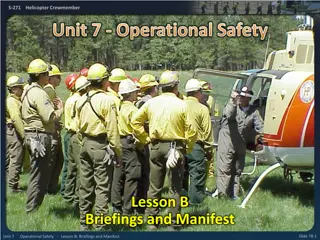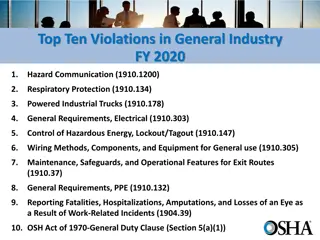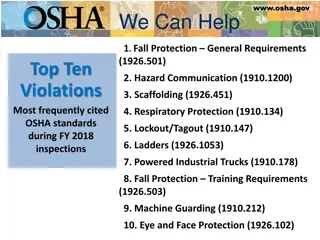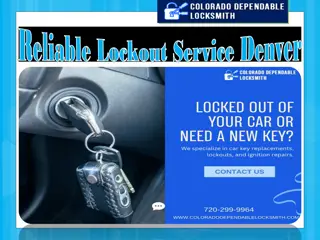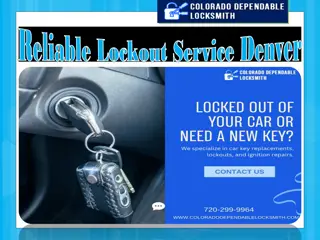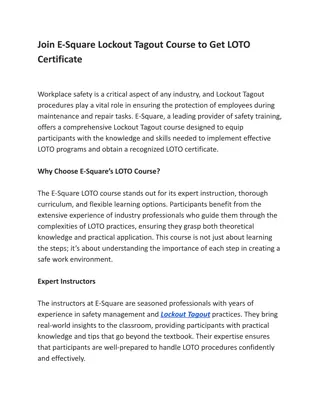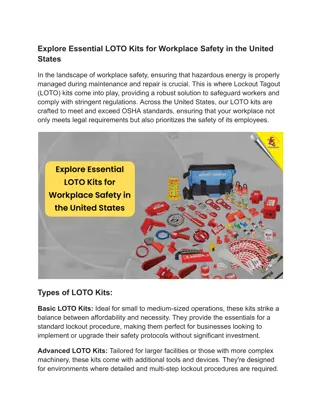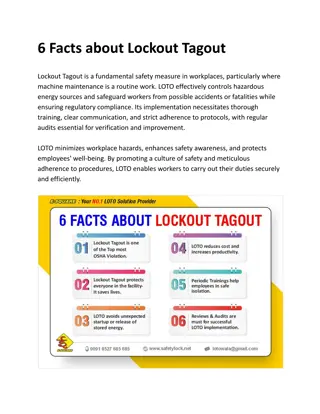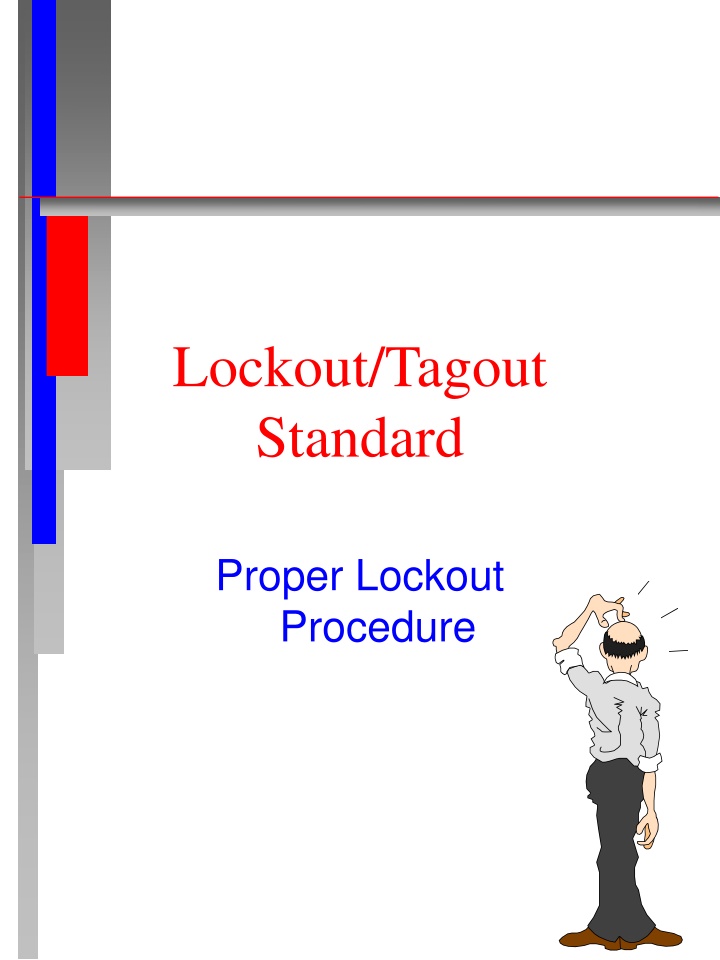
Effective Lockout/Tagout Procedures for Workplace Safety
Implementing proper lockout/tagout procedures is crucial to preventing hazardous energy releases in the workplace. This article covers the standard procedures, main causes of injuries, employee definitions, energy sources, types of lockout devices, and a detailed lockout procedure. Understanding and following these guidelines can significantly reduce the risk of accidents and ensure a safe working environment for all employees.
Uploaded on | 0 Views
Download Presentation

Please find below an Image/Link to download the presentation.
The content on the website is provided AS IS for your information and personal use only. It may not be sold, licensed, or shared on other websites without obtaining consent from the author. If you encounter any issues during the download, it is possible that the publisher has removed the file from their server.
You are allowed to download the files provided on this website for personal or commercial use, subject to the condition that they are used lawfully. All files are the property of their respective owners.
The content on the website is provided AS IS for your information and personal use only. It may not be sold, licensed, or shared on other websites without obtaining consent from the author.
E N D
Presentation Transcript
Lockout/Tagout Standard Proper Lockout Procedure
Lockout Lockout is a technique used to prevent the release of hazardous energy, or to prevent the hazardous energy from escaping. A padlock is placed on the appropriate energy isolating device that is in the off or closed position.
The Fatal Five Main Causes of Lockout/Tagout Injuries Failure to stop equipment Failure to disconnect from power source Failure to dissipate (bleed, neutralize) residual energy Accidental restarting of equipment Failure to clear work areas before restarting
Definitions Authorized Employee - one who locks out machines or equipment in order to perform the servicing or maintenance on that machine or equipment. Affected Employee - one whose job requires him/her to operate or use a machine or equipment on which servicing or maintenance is being performed under lockout, or whose job requires him/her to work in an area in which such servicing or maintenance is being performed.
Definitions, cont. Energy Isolating Device - A mechanical device that physically prevents the transmission or release of energy. Energy Control Procedure - Safety program adopted by the employer that includes energy control procedures plus provisions for inspecting the procedures and training employees for lockout/tagout.
Hazardous Energy Sources Found in the Workplace Electrical Generated Static Mechanical Transitional Rotational Thermal Machines or Equipment Chemical Reactions Potential Pressure Hydraulic Pneumatic Vacuum Springs Gravity
Types of Lockout Devices Plug Locks Ball Valve Lockout Gate Valve Lockout Group Lockout Hasp Electrical Hydraulic, pneumatic, and other pressurized systems
Lockout Procedure Alert the operator (s) that power is being disconnected. Preparation for Shutdown Equipment Shutdown Equipment Isolation Application of Lockout Devices Control of Stored Energy Equipment Isolation- Verification
Removal of Lockout Ensure equipment is safe to operate Safeguard all employees Remove lockout/tagout devices. Except in emergencies, each device must be removed by the person who put it on. Last person to take off lock Follow checklist
Temporarily Reactivating Equipment Remove unnecessary tools from the work area and make sure everyone is clear of the equipment Remove lockout/tagout devices and re-energize the system As soon as the energy is no longer needed, isolate the equipment and re-apply lockout/tagout, using the six step procedure.
Special Situations Servicing lasts longer than one shift. Contractors are performing service or maintenance at your workplace Worker who applied lock is not available
Tidbits of Info. Never attempt lockout/tagout procedures unless you have been trained and certified by your employer under an approved Energy Control Program. Never loan or share your lock, combination, or key with anybody else. Always be sure all lockout/tagout devices are compatible with the environment in which they will be used i.e. corrosive, humid, etc.








